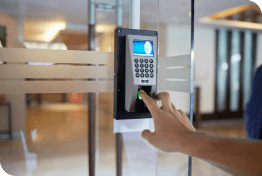
- Smart Alarm Management
- Artificial Intelligence
Leveraging AI to enhance incident response in SOCs
As physical security technology swiftly advances, AI stands out as a transformative force. Why? AI can redefine industry standards by speeding up responses to critical incidents, such as fire alarms, and reducing false alarm rates. This article delves into how AI reshapes security operations to streamline processes and empower security personnel for more sustainable growth.
Wireless networks: The AIoT advantage
AIoT—the convergence of AI and the IoT—merges intelligent analysis with interconnected device data, enhancing security operational efficiency. Analyzing data from many IoT devices provides actionable insights that improve situational awareness and accelerate incident response, offering tangible benefits in various high-stakes scenarios.
Proactive solutions through AI: Beyond real-time monitoring
AI has transformed monitoring from a task that requires constant human attention to one that’s proactive and automated. Transitioning from manual to AI-enhanced monitoring allows continuous data analysis to identify anomalies and security breaches across multiple venues and devices. AI-driven video and audio analytics utilize advanced recognition technologies to detect unusual activities, such as unattended baggage or unauthorized individuals, significantly improving situational awareness and reducing the workload on human operators by minimizing false alarms.
Predictive analytics for swift incident response
AI excels in predictive analytics, a crucial tool for anticipating and mitigating potential security threats. By analyzing patterns from diverse data sources, including traffic flows, social media, and weather reports, AI tools provide early warnings to socs, enabling preemptive action. This predictive prowess mitigates risks and optimizes resource allocation, enhancing overall security infrastructure.
Augmenting human capabilities: The role of robotics
In physical patrols and routine surveillance, AI-augmented robots and drones offer a robust supplement to human efforts. Unlike their human counterparts, drones are not bound by physical limitations—they can navigate various terrains and detect thermal signatures, offering a comprehensive overview that enhances on-site security measures without replacing the human touch.
Operational efficiency and AI-driven access control
AI significantly simplifies the complexities associated with access control. By integrating predictive analytics and advanced pattern recognition, AI-enhanced systems can detect and react swiftly to anomalous behaviors, ensuring a higher level of security with reduced human oversight.
AI as a catalyst for SOC efficiency
AI’s integration into SOC processes promises substantial improvements in efficiency and accuracy. From automating rule creation based on extensive data analyses to refining reporting mechanisms, AI enables SOCs to focus on strategic tasks such as threat analysis and critical decision-making during incidents.
Navigating ethical terrain in AI deployment
The deployment of AI in security settings must be managed with a keen awareness of ethical implications, including potential biases and privacy concerns. Ensuring transparency in AI operations and maintaining open communication with all stakeholders is essential to fostering trust and ethical compliance.
Conclusion: Embracing AI for future-ready security leadership
Adopting AI tools enhances incident response efficiencies and paves the way for cost reductions and time savings. However, successfully integrating these technologies requires informed leadership to guide organizations through digital transformation. By staying ahead of technological trends and managing the shift to AI-powered systems, leaders can ensure their teams are well-equipped to meet future security challenges effectively.


